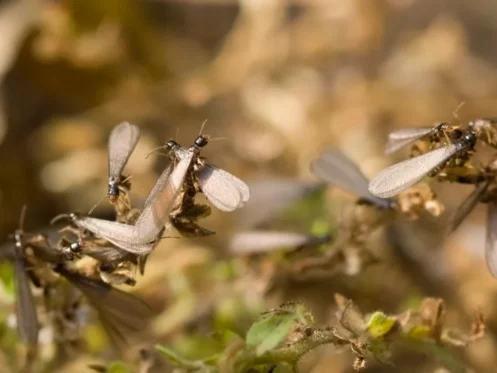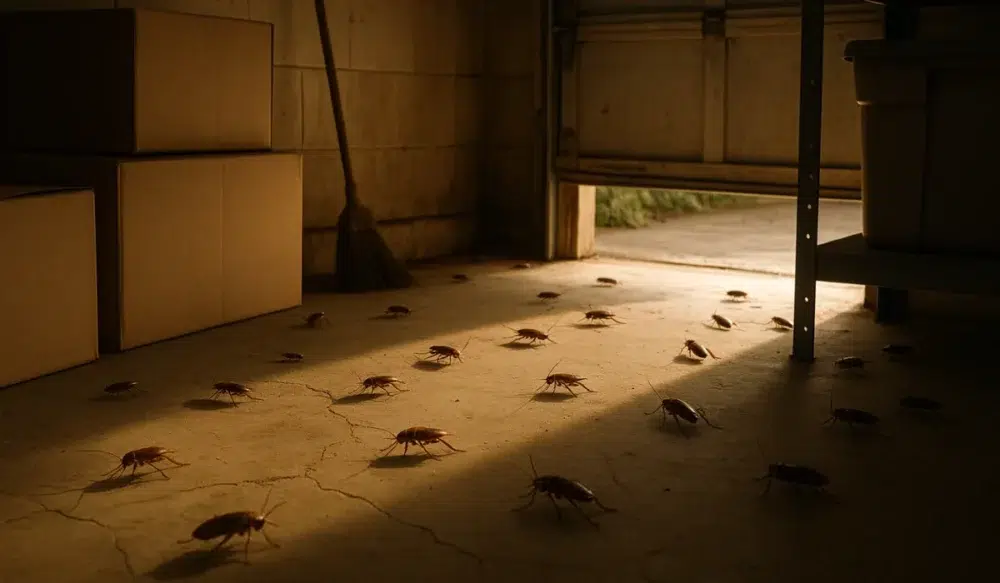If you’re noticing flying termites around your Tucson home, it’s not just an annoyance – it’s a potential warning sign of a larger problem. Flying termites, also known as swarmers or alates, emerge in swarms during specific times of the year to mate and establish new colonies.
Understanding why flying termites are a red flag is critical for homeowners. Let’s break down what this means and what you should do about it.
Key Takeaways
- Flying termites in Tucson warn of established colonies nearby, signaling increased risks of widespread termite infestations.
- Tucson’s warm climate and monsoon season create ideal conditions for termites to swarm, mate, and build new colonies.
- Desert subterranean termites cause serious damage by infiltrating homes through cracks and feeding unnoticed on wooden structures.
- Acting quickly with professional pest control is essential, as termites can silently cause severe damage over many years.
1. Flying Termites Suggest a Mature Colony
Seeing flying termites, or termite swarmers, means there’s already a well-established colony in the area. Mature colonies produce these reproductive termites, which fly off to create new colonies, increasing the risk of infestations spreading around your home.
2. Arizona’s Climate Drives Termite Activity
Tucson’s warm weather and monsoon season create the perfect conditions for termites to thrive. The added humidity during monsoons spurs swarming when reproductive termites seek to mate and establish new colonies.
Desert subterranean termites, common in the region, have adapted to Arizona’s dry environment by using mud tubes to keep moisture while accessing wood and other food sources.
3. Desert Subterranean Termites Are Especially Destructive
Among the termite species found in Tucson, desert subterranean termites are particularly problematic.
They can infiltrate homes through cracks in concrete slabs and foundations, feeding on wood and cellulose-based materials. Their activity often goes unnoticed, allowing significant damage to accumulate over time.
4. Termites Work Silently
Termites are often called “silent destroyers” for good reason. They can infest a home for years without obvious signs, eating away at wooden structures, walls, and furniture.
By the time flying termites appear, the colony has likely been active for a while, putting your home at greater risk of severe structural damage.
How to Spot Termite Swarms and Infestations
Spotting flying termites isn’t the only red flag. Other signs of termite problems include:
- Mud Tubes: Thin tunnels running along walls, foundations, or wooden structures.
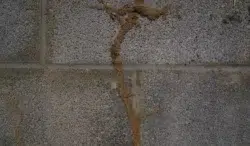
- Wood Damage: Hollow-sounding or weakened wood that’s easily broken.
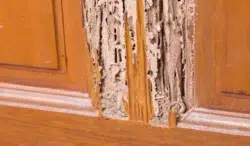
- Small Holes: Tiny openings in wooden surfaces where termites may enter or exit.
- Shed Wings: Discarded wings on windowsills, near doors, or in other areas where termites may have swarmed.
- Termite Swarms: Visible gatherings of winged termites during mating season.
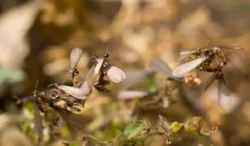
How to Protect Your Home from Termite Swarms
If you suspect a termite problem, it’s vital to act quickly. Termite control is a complex process that requires expertise. DIY treatments often fail to address the root of the problem, leaving your home vulnerable.
A trusted pest control company in Tucson can provide a comprehensive solution, including:
- Thorough inspections to locate termite colonies.
- Customized termite treatment plans.
- Preventative measures to deter future termite infestations.
Besides termites, Arizona homes are prone to other pests like scorpions, cockroaches, and bed bugs. A professional exterminator can address all your pest control needs, protecting your home year-round.
Need a Termite Professional? We Can Help
Seeing flying termites in Tucson is a serious concern, but Green Home Pest Control is here to help. Our experienced team specializes in termite inspection, treatment, and prevention, offering tailored solutions for Arizona homeowners.
With a focus on safe, effective methods, we ensure your home is protected from termites and other pests year-round.
Don’t wait until the damage gets worse—contact us today for a comprehensive termite inspection and customized treatment plan.
